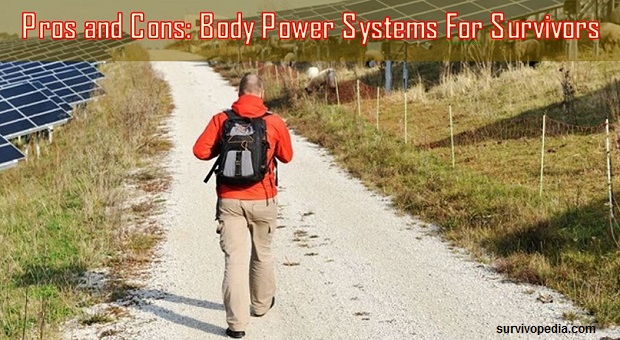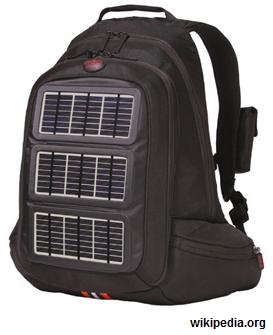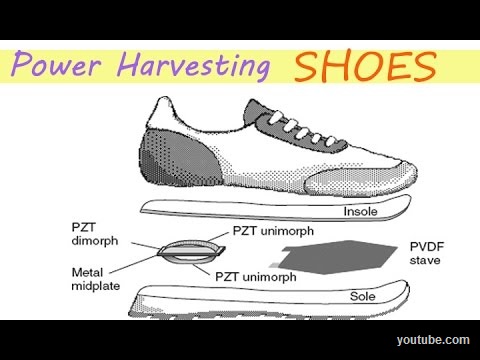
When people think of long term, catastrophic power outages, EMP based crisis situations tend to be the ones that come to mind first. While an EMP can truly be devastating, earthquakes and many other events can also wipe out the grid for miles around your location.
As such, even if you have a homestead, being at the epicenter or ground zero of a crisis situation may mean that your off grid power system will fail or be rendered useless because of extensive damage.
Although the following systems may not generate huge amounts of electricity, they may offer just enough to power medical devices, radios, smart phones, computers, or any other small devices that can help you get through the initial crisis period.
No system is perfect, nor will it work in every situation that you find yourself in.
This article does not cover bicycles or other larger devices that may be used to generate power, but is dedicated solely to small devices that can fit into a backpack, or can be carried around with relative ease.

Solar Generating Backpacks
Basically, a solar generating backpack is just like a regular backpack in the sense that you can pack books, food, or just about anything else in it.
The solar generating backpacks also have a rechargeable battery (usually in the bottom), and a solar panel on the outside of the pack.
Depending on the model that you choose, some may only be able to power cell phones and other relatively low power devices while others can power tablets and medical devices that have a similar power usage range.
A solar generating backpack works just like a regular solar panel in the sense that the panels need to be exposed to sunlight in order to generate power. Typically, you can go as low as 50% sunlight and still get a fully charged battery in just a few hours. As with conventional solar power generation panels, they still work best when they are in full sunlight.
Advantages
One of the main advantages to solar generating backpacks is that you can generate power with them when you are walking or hiking. This is ideal if you have to travel on foot, bike, or some other mode of transport over large and small distances. Even if you decide to travel through a forest or other area with some degree of shading, you can still generate at least some power.
Second, one of the biggest problems with large scale and home based solar power generation systems is that the sun moves a significant degree every 15 minutes. As such, there are very few systems that can keep up with this motion and have the entire panel absorbing as much heat and light from the sun as possible.
By contrast, a solar generating backpack can be easily repositioned. No matter whether you set up camp and plan to stay for several days, or you are traveling by car, simply change the orientation of the panels to get as much sunlight on to them as possible. This includes easily changing the angle of the panels to accommodate seasonal changes that are even harder to compensate for in stationary systems.
Disadvantages
Here are five problems that you may encounter with solar generating backpacks:
- Depending on the battery size, the overall weight of an empty pack can be a quite heavy. Though five pounds for a battery and solar panel may not seem like much now, that weight can be extremely burdensome over a long hike. Even though you should be able to carry 40 – 60 pounds for several hours at a time for the sake of survival fitness, there are bound to be times when you will find yourself thinking that you aren’t getting quite as much power as you hoped considering the added weight of the pack.
- Solar panels and batteries can all be destroyed by an EMP.
- Even though modern solar panels are sturdier and last longer, they will eventually wear out. Pay careful attention to the warranty on the panels and batteries. If the manufacturer will not fully guarantee the product for at least 10 years, then you should not expect it to stand up to harsh conditions or uses that might occur in a survival situation.
- It may be hard to shield the panels from damage during rainy weather or cold temperatures.
- You will not be able to generate power at night or on days that are below 30% of full sunlight.
What About DIY Options?
Interestingly enough, some of the most common problems that you might encounter with a solar generating backpack may be solved by creating your own system. Here are some advantages:
- You can use any backpack that you like. This includes a heavy duty backpack with rails, a surplus military pack designed for rugged conditions, or just about any other pack that appeals to you for use as a bug out or bug in bag.
- You can choose any battery and power rating that suits your needs. No matter whether you want to see if you can get batteries based on cotton, nano technologies, or some other battery type, they can all be added to your pack after purchase. As you may be aware, cotton based batteries may be as much as 50% or more lighter, will last longer, and supply much more power. Waiting for this technology alone to hit the markets may be well worth your effort instead of buying a pack that cannot be changed over time to accommodate a different battery type.
- Today there are also many advancements in solar panel and solar energy harnessing technologies. This includes solar power collecting materials that can be printed out using a regular printer. These soft, light weight, pliable solar collectors can be custom fitted onto your backpack and give it an even larger area for collecting solar energy.
- All of the parts that you can choose can be selected with long term ease of repair or rebuilding in mind. For example, if you choose printable solar panels, you can easily pack extras away or make sure that you can always manufacture new ones as needed.

Piezoelectric Power Generating Sneakers
Piezoelectric Power Generating Sneakers are worn just like regular shoes.
Depending on the model, they may have thicker soles or some other adaptions to accommodate tiny batteries and the main power generating area in the soles.
No matter whether you are walking or running, they will generate power and charge up batteries.
Quartz crystals, tourmaline, and some other materials will emit electrons in one specific direction if the material is squeezed or heated. In the case of piezoelectric power generating sneakers, the materials respond to pressure from your foot by emitting a small amount of electricity.
This electricity, in turn, is captured by a rechargeable battery which can be used to power any number of devices. Typically, the amount of power generated by these shoes is very small, however as the technology improves, it may one day rival backpack power generating systems.
Advantages
One of the greatest advantages of piezoelectric power generation sneakers revolves around the fact that you don’t have to do anything extra in order to generate power. No matter whether you are walking, hiking, running, or even pedaling a bike, the energy you are already expending to carry out these activities will also go into generating power.
Since these shoes are also fairly light weight, you don’t have to worry about them becoming burdensome on a long or protracted journey.
In a survival situation, the ability to generate electricity can easily be something that draws unwanted attention in your direction. For example, if you are running around with a solar power generating backpack, or something else equally obvious, rest assured that people might try to steal it from you.
On the other hand, if you chose piezoelectric power generating sneakers, that blend in with others commonly worn in your area, chances are no one will ever know you are generating power as you walk.
Disadvantages
Even though these sneakers have a lot to offer when compared to heavier or more obvious power generation methods, they also fail to generate as much power as you might need. In some cases, they may also not be as durable, and the shoe itself may be very uncomfortable.
It is also important to think about how long shoes actually last in the modern world. For example, if you walk a few miles a day and purchase a mid-range pair of shoes or boots, you will be lucky if the soles don’t fall apart in 4 – 6 months.
From that perspective, piezoelectric power generating shoes may not be a good option if you plan on using them to generate power beyond a few months. To add insult to injury, the electronic components and batteries may even fail long before you have to get a new pair of shoes.
What About DIY Versions?
There are many advantages to making your own piezoelectric power generation shoes. Here are just a few things to consider:
- You can customize just about any pair of shoes and never worry about a name brand or other feature giving away the fact that your shoes can generate power. For example, if you have a favorite brand of hiking boots, you can customize them with a DIY insole and then add the battery to another part of the shoe where it will not be uncomfortable
- Once you know how to build a DIY piezoelectric power generation system, you can adapt it to as many shoes, or even other items that can be used to generate power. This includes straps that you wear while talking or eating as well as ones that you can use when using hand grip exercisers.
- Making your own insoles will make it easier to repair or make new ones as needed. At the very least, if you have shoes that will last for several months, you may be able to replace the insoles as needed without having to buy a whole new pair of shoes.
- It may also be possible to build EMP proof systems that can be used in just about any situation. Just be aware that your battery options may be a bit limited because of the small size that you will be working in.
Backpack Powered by Walking
When it comes to generating power, backpacks that generate power from walking are often used for tablets and other higher drain devices.
This particular system does not use solar panels or other forms of external energy to generate electricity.
Rather, they rely on the repetitive motions of your body to generate power as you walk, run, or carry out other activities.
If you do some research, you are sure to come across a range of devices that generate electricity by using gears and other assemblies. In this case, backpacks that generate power by walking or running rely on cords that connect the backpack to your feet or arms.
As you move, the motion from your body is translated into electricity via the gears or other devices inside the backpack. From there, the power is stored in a battery, much as it would be for solar power generation backpacks.
Advantages
Unlike solar power generating backpacks, the body powered models do not require sun or any other energy from the environment. If you are inclined to walk on a rainy day, at night, or even in a snowstorm, these power generators will continue to work. As long as the ropes are hooked up to your shoes or arms, and you are moving, then you will have a steady supply of power moving into the battery.
Unlike piezoelectric power generating shoes, anyone can put on the backpack and start walking to generate power. Since the ropes are fairly easy to adjust, they are truly a “one size fits all” power source that can also be used to carry important items from one place to another.
Body powered backpacks are also more durable. You will never have to worry about an electronic solar panel wearing out, or a shoe insole breaking down.
Disadvantages
Even though body powered backpacks can generate a good bit of power, they can also be very uncomfortable to wear. For example, if you decide to attach the ropes/cords to the back of your shoes, you will constantly feel the pull of that cord while you are walking. If you don’t like being a puppet on a string, then you are not likely to be comfortable with this feeling.
Aside from being uncomfortable, you will need to make sure you can walk or run with these cords even if you are in a woods or some other area where they might get tangled up easily.
Perhaps it can be said that if you are fortunate enough to be walking along a wide or well kept trail, then you can use this system without too many problems. Otherwise, you may have to disconnect the cords and use them in a location that has fewer obstructions.
The cords for body powered backpacks are also going to be very obvious to others when you are walking around. Looters, rioters, or anyone else looking to steal may well recognize that the pack you are carrying generates power, and then they will want to steal it from you.
No matter whether you need this power to charge up medical devices or something else of importance, all your hard work can be lost in a matter of minutes. Unfortunately, if you try to tuck the cords inside your pants, they will not work as well, if at all. To add insult to injury, the constant rubbing along the backs of your legs can cause burns and other problems.
What About DIY Options
Even though you can convert a regular backpack into a body powered device, it may not be worth your effort. Among other things, you may not be able to overcome the basic disadvantages of this design let alone gain any benefit from doing so.
That being said, if you are intent on creating a single backpack that can generate power using multiple methods, it never hurts to integrate this system with a solar powered system. At the very least, if you decide to travel at night through an unpopulated area, you can still generate power for a range of needs.

DIY Propeller Hat Power Generator
Have you ever seen the striped hats with pinwheels or propellers on them?
If so, you may find them more of an amusing toy than an actual means to generate power.
But with some creative insight and a few simple materials, you can, indeed, use these propeller hats to generate a good bit of power.
If you have ever seen pinwheel caps, then you should also realize they can be a fun, easy way to generate power. While these caps are often the prop of stereotype geniuses, there are no caps on the market that can be used to generate power.
However, if you add a coil of wire to the hat and some magnets to the propeller, you can induce an electrical current. Just make sure that you don’t get a shock from the cap, and that you have a suitable battery solution.
Depending on the speed that the propellers move and the efficiency of the coil and battery system, you may be able to generate enough power for medical devices, tablets, and perhaps higher drain cameras.
Advantages
In the time during, and well into the post-crisis period, being able to avoid detection is going to be very important. Typically, anything that you have of value can make you a target of looters and just about anyone else that wants to steal from you so that they can gain something to sell or use for their own needs.
Unlike many other means of generating power, a propeller hat will easily be missed. Though people may think you look a little odd, they aren’t likely to see a reason to take the hat from you. In fact, if you dress in scrubby clothes and look a little on the dangerously deranged side, people may even decide to avoid you because they think you have nothing. Just be careful that bullies and other predators don’t try to hunt you for sport because they think you can’t defend yourself.
If you are far enough away from the main site of an EMP event, simple coils and magnets should not be damaged by the event, therefore, you will still be able to generate power as if nothing happened. In a worst case scenario, simply carry extra batteries and charging links in a Faraday cage.
As with many other body powered devices, you can also adapt any number of hats, helmets, and caps to generate electricity. In this case, you may also be thinking about situations where you will need to wear a gas mask or even bullet proof head gear in order to survive a riot situation.
While it may sound strange to put a propeller on any of these headgear items, never forget that you can still be generating power that might be used for targeting systems, or anything else where battery failure would spell disaster for you.
Disadvantages
When compared to other body based power generating systems, there is a definite limit to the amount of power you can generate from a single cap. Among other things, the weight of the magnets and coils can get fairly heavy and become burdensome.
It should also be noted that this system will be inducing both magnetic and electric currents very close to your brain. As such, there may be long term health risks such as cancer and other diseases. If you do not trust bluetooth technology, cell phones, WIFI, and even electric sockets because of the radiation they emit, then you may also want to rethinking generating electricity so close to your head.
In the modern world, it is often easy to get mired in complex technologies and other assorted ideas aimed at generating fairly large amounts of power. On the other hand, there are also a number of toy and body based power devices that might just provide enough power for smaller devices that are also of immense importance to you.
Depending on the device that you choose, even a small investment may be enough to test out some alternative energy sources as well as make it much easier to survive just about any situation and keep small, low power need devices operating at a time when you need them most.
This article has been written by Carmela Tyrell for Survivopedia.






